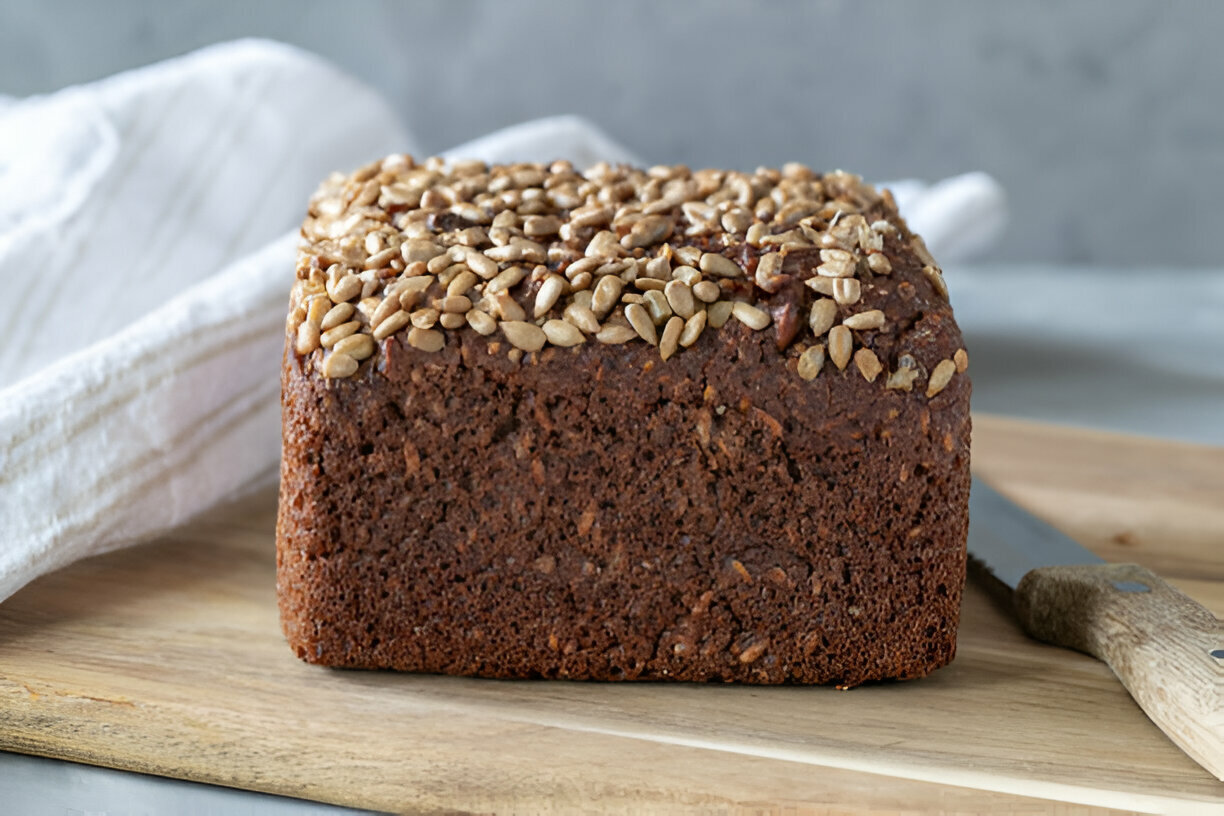
Sunflower Bread Recipe
This sunflower bread is packed with hearty grains, a soft yet chewy interior, and a golden crust topped with toasted seeds. It's a rustic loaf that brings comfort and texture to every slice.
Pin
Print
Save
Servings: 1 loaf
Calories: 220kcal
Ingredients
- 1 cup 140 g toasted, unsalted sunflower seeds + ¼ cup (35 g) for topping
- 2 1/8 cups 510 ml lukewarm water
- 2 ¼ teaspoons 7 g active dry yeast
- 1 tablespoon 18 g honey
- 1 tablespoon 18 g molasses (honey can be used instead)
- 3 teaspoons 18 g fine salt
- 180 g rye flour approximately 1 ½ cups*
- 220 g whole wheat flour approximately 1 ¾ cups*
- 180 g white bread flour approximately 1 ¼ cups
- Oil for greasing the loaf pan
Instructions
- Begin by combining the lukewarm water with the molasses and honey in a large mixing bowl. Sprinkle the active dry yeast over the liquid and allow it to rest for about 5 to 10 minutes, or until a frothy, creamy layer forms on the surface.
- Add in the white bread flour and whole wheat flour. Using a sturdy cooking spoon, stir vigorously until the mixture takes on a thick, pancake batter-like consistency. Once the mixture is smooth, incorporate the salt and 1 cup of the toasted sunflower seeds, stirring until evenly distributed.
- Next, gradually add the rye flour in two or three additions. Switch from a whisk to a strong cooking spoon, stirring with effort to thoroughly incorporate the flour. Be sure there are no dry pockets or flour clumps stuck to the bottom of the bowl. The dough will be dense and sticky—resist the urge to add more flour, as doing so may result in a dense and heavy loaf.
- Lightly grease a 9 x 5-inch loaf pan with oil. Transfer the sticky dough into the pan, smoothing the surface as best you can with your spoon. Wet your hands with water and gently pat down the top to create an even surface.
- Sprinkle the remaining ¼ cup of sunflower seeds over the top of the dough. Whether using toasted or raw seeds, press them lightly into the surface to ensure they adhere.
- Cover the pan and allow the dough to rise for 45 to 60 minutes, or until it reaches the top of the loaf pan or slightly overflows. For an effective rising method, place the entire pan inside a clear produce bag, trap some air inside, and seal it shut—just make sure the bag doesn’t touch the dough.
- Once risen, the dough may have bare spots where seeds shifted during rising. If desired, lightly sprinkle a few extra sunflower seeds on top and gently press them in.
- Preheat the oven and bake the bread on the center rack. Start at 450°F (230°C) for 10 minutes, then reduce the temperature to 400°F (200°C) and continue baking for an additional 30 minutes, until the crust develops a deep golden-brown color.
- Once baked, allow the loaf to cool for 5 to 10 minutes in the pan. Carefully remove it while still hot and place it on a wire rack to cool completely. Cutting the bread too soon may result in a gummy texture inside.
- This bread develops its best texture and flavor by the second or third day. Once cooled, store in a bread box or wrap tightly in wax paper—avoid using plastic wrap to maintain the crust's integrity.
Nutrition
Calories: 220kcal
Did you make this recipe?Want more delicious recipes like this? Follow us on Pinterest for daily inspiration! Click here to Follow me on Pinterest @feaztcom